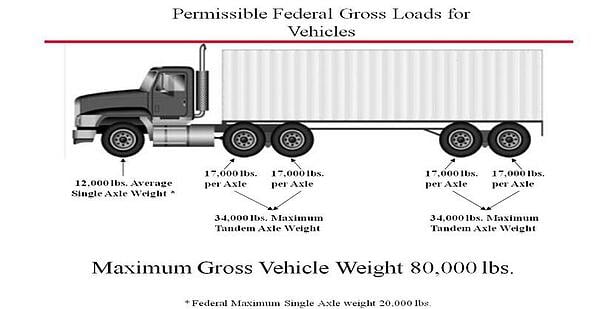Understanding the difference between gross and tare weight is important when it comes to shipping via the freight modes of truckload or intermodal because of the various rules and regulations associated with weight on US roads.
Definition of Gross & Tare Weight
Gross Weight
The gross weight of shipment is to total weight of the tractor and trailer (or when it comes to intermodal the combination of the chassis and container), along with all its contents.
In other words, whatever the total weight is of tractor and trailer is when it is scaled is the total gross weight. The gross weight of a shipment is sometimes called laden weight.
Tare Weight
Tare weight is defined as the total weight of tractor and trailer when the vehicle is empty, meaning there is not any product in the trailer. Tare weight can also be called unladen weight.
Often times the tare weight is printed on intermodal container to help in the computation of the gross weight when loading the equipment.
The importance of gross and tare weight is to ensure a shipment is legal on roads and bridges.
Not only is the total weight important when shipping a truckload or intermodal shipment, but so too is the distribution of weight across the tractor and trailer, as is illustrated below:

The total gross legal weight a shipment can move on the US highway system is 80,000. There are some variations and limitations by state and even regions within states, so it is important to pay close attention to the markings and route the freight accordingly. Also, as was noted earlier there are some regions that have variations on weight for bridges.
As a rule of thumb, shippers can load 45,000 pounds for its truckload shipments and 42,500 for its intermodal shipments. The reason the 2,500 pound decrease for intermodal shipments is the combined weight of the container and chassis is 2,500 pounds heavier than an over-the-road (OTR) trailer.
Some items to note as it relates to shippers having product that often pushes up to the limits include:
- There are options to find motor carriers that can load “heavy”, meaning the product being loaded on a trailer is greater than 45,000 pounds. The ability to load “heavy” is because the carrier has specialized light weight trailers that weigh less, so they can load more into it and still stay at or under the total weight of 80,000.
- The “heavy haul” carriers will charge a premium for the use of their premium trailers, but if the shipper reviews the total cost per ton will often find that it is cheaper than it would have been shipping less on a standard trailer.
- Another option for shippers that push the weight envelope is to have their carriers only use day cabs versus the overnight cabs. The day cab is lighter and therefore more product can be loaded and still stay within the 80,000 limit.
- When an intermodal shipper is pushing the weight, their IMC will often request the dray carrier to go light on their fuel to help ensure the load stays under the 80,000 limit.
Other articles of interest include:

If you're ready to take the next step, at InTek Freight & Logistics, we can help. Just tell us what you need and we'll discuss how our expertise can help with the unique shipping challenges your business faces. Rather do a bit more research first? View our Freight Guides for comprehensive articles and eBooks on all things freight and logistics.



